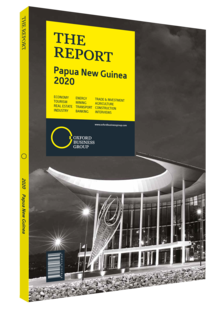Sasindran Muthuvel, Minister of State-Owned Enterprises: Interview

Interview: Sasindran Muthuvel
Where are there opportunities to optimise the management, performance and corporate governance of state-owned enterprises (SOEs)?
SASINDRAN MUTHUVEL: At the executive management level, we must have individuals with relevant skills and experience, along with integrity and sound character, leading SOEs. I have recently pushed for Kumul Consolidated Holdings (KCH) to outsource the recruitment of managing director roles to third-party human resources experts to optimise the process and widen reach. We must avoid the appointment of executives who are not fit to lead an SOE, which may have occurred in the past for political reasons. The same is true for SOE boards; we need qualified men and women on these boards who can outline a broad strategy to deliver profits. Each board will have specific needs and sub-committees, such as risk and audit, and capital raising. This requires people who are knowledgeable and experienced in these areas. Amendments to the KCH Act in 2015 impacted the ability of KCH to monitor new capital expenditure contracts for SOEs. It is important to reinstate this safeguard to ensure that investments have a sound commercial business case. Amendments must focus on greater disclosure on the performance of SOEs similar to that of stock-exchange listed companies, such as mandating annual reporting with audited financials. This must include clearly articulated statements of corporate intent, with a forecast of capital and operating expenditure plans. These should be made available to the public, as citizens should be able to scrutinise the performance of SOEs and ask questions.
What is the status of the Public-Private Partnership (PPP) Act, and how will it benefit the country?
MUTHUVEL: Although the PPP Act was passed in Parliament in 2014, it has not yet been operationalised through the introduction of enabling regulations. The issue has been raised with the Department of Treasury under the government’s SOE reform programme. The problem is now being addressed, and PPP arrangements have progressed. Options for PPPs include a joint-venture equity holding between the state and a private sector partner, a long-term build-own-operate-transfer arrangement or a fully outsourced management contract. Each of these examples has pros and cons.
One good example of a PPP that has delivered solid commercial results is the outsourcing of the seaport management services of the Motukea International Terminal to International Container Terminal Services. The next promising PPP opportunity on the horizon is the establishment of a competitive third-party logistics company in conjunction with Post PNG.
How can the performance of SOEs in the resource sector be improved to increase their contribution to public revenue and national development goals?
MUTHUVEL: There are SOEs that protect the state’s interests in large resource projects, as well as the interests of landowners. For oil and gas projects, responsibility falls to Kumul Petroleum Holdings, while mining projects are overseen by Kumul Mining Holdings Limited (KMHL). These two entities are governed by legislation distinct from the KCH Act. I oversee the KMHL and my focus is on empowering the KMHL board to both negotiate the state’s interest in new projects, such as the Wafi-Golpu mining project, and ensure that projects can proceed with all parties on an equal footing. Large mining projects also require supporting infrastructure, such as power, telecommunications and seaports, which fall under the purview of the KCH.
My other responsibility is to ensure that mine development planning can simultaneously incorporate the development of any new necessary infrastructure and address parts of the national development agenda, such as power coverage. Ultimately, the economically viable path forwards for all parties is one that leads to commercial returns for mine shareholders, while also bringing benefits for local government and landowners.
You have reached the limit of premium articles you can view for free.
Choose from the options below to purchase print or digital editions of our Reports. You can also purchase a website subscription giving you unlimited access to all of our Reports online for 12 months.
If you have already purchased this Report or have a website subscription, please login to continue.

